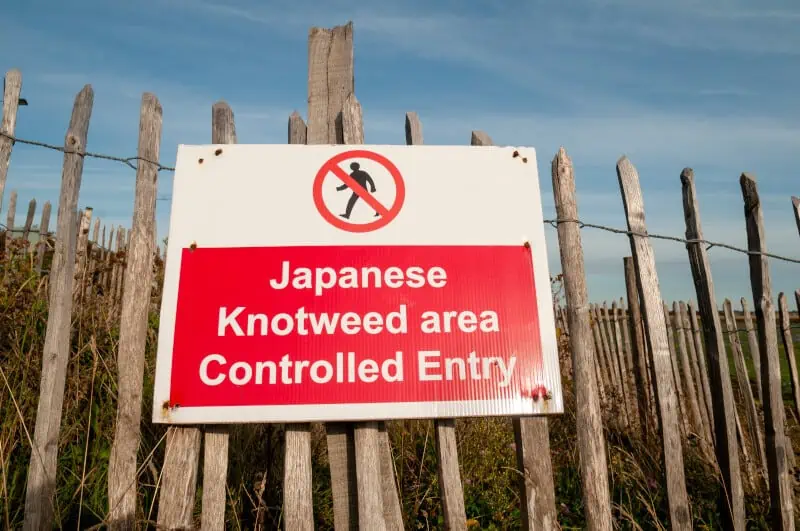Traveling with plants on a plane is a topic of interest for many travelers who wish to bring a piece of their garden with them or transport botanical gifts. Whether you’re moving, visiting friends and family, or attending events, understanding the nuances of flying with plants is essential. This includes knowing airline policies, security procedures, and international regulations. The process involves more than just packing your plants; it requires familiarity with documentation such as phytosanitary certificates for international travel and an awareness of restrictions on certain plant species. Additionally, packing plants correctly to ensure their safety and compliance with airline regulations is crucial. This guide provides essential information and tips for a smooth experience when taking plants on a plane.
Can I Take Plants on a Plane?
Traveling with plants can add a comforting touch of home to your journey, allow you to share your green-thumb successes with others, or even transport ingredients for dinner. However, when it comes to air travel, both domestic and international regulations can vary. Understanding these rules is crucial for a hassle-free journey with your leafy companions.
USA Domestic Flights
- TSA Regulations: The Transportation Security Administration (TSA) allows passengers to bring plants on domestic flights. However, they must pass through the standard security screening process.
- Airline Policies: Each airline has its policy regarding the transportation of plants. It’s essential to check with your airline for specific guidelines on size, packaging, and any fees.
TSA Guidelines on Transporting Plants – Transportation Security Administration: TSA Guidelines on Transporting Plants.
Delta Air Lines’ policy on fragile, bulky, and other items, which may include plants: Delta Air Lines Special Items Policy.
Packing Tips
- Secure the plant in a sturdy container.
- Cover the soil to prevent spillage.
- Consider using a plastic bag to maintain humidity.
- Cabin vs. Checked Baggage: Smaller plants can often be carried in the cabin, but larger plants may need to be checked. Ensure your plant can withstand the conditions in the cargo hold, such as temperature changes and reduced air pressure.
- State Regulations: Some states have restrictions on the type of plants that can be brought in to prevent the spread of pests and diseases. Check the state’s Department of Agriculture website for specific information.
Flying with Plants Internationally
Traveling internationally with plants presents a unique set of challenges and regulations that vary by country. Understanding these rules is crucial to ensure your plants can legally and safely travel across borders.
Understanding Country-Specific Regulations
- Research Destination Regulations: Each country has specific import rules for plants. These are often available on the official website of the country’s customs or agriculture department.
- Prohibited Species: Some countries have lists of prohibited species due to their invasive nature or potential to carry pests.
- Endangered Species: International laws, like the CITES agreement, restrict the movement of endangered plant species. Ensure your plant is not on this list.
Pre-Travel Preparations
- Phytosanitary Certificates: Most countries require a phytosanitary certificate to prove the plant is disease-free. This can be obtained from the local agriculture department or a certified plant inspector.
- Permits: Some countries require special permits for importing plants, which need to be applied for in advance.
Airline Policies
- Size and Packaging Restrictions: Airlines have specific guidelines on the size and type of packaging for plants. Check these beforehand to ensure compliance.
- Fees: Be prepared for potential additional fees for transporting plants, especially for larger specimens.
At the Airport
- Declare at Customs: Always declare your plants at customs. Failure to do so can result in fines or confiscation.
- Inspection: Be prepared for your plants to be inspected by customs or agriculture officials.
Traveling to Specific Countries with Plants
Different countries have different regulations regarding plant importation. Here are some general guidelines for a few popular destinations:
United Kingdom
The UK has specific rules for bringing plants or plant-based products into Great Britain for personal use, which depend on the type of products and the country of origin. GOV.UK
Europe
For the EU, certain plants, plant products, and other objects entering the EU must have a phytosanitary certificate. There are exemptions for certain items like specific fruits and for plants for trial or scientific purposes. European Commission
USA
The Transportation Security Administration (TSA) allows plants in both carry-on and checked bags, but advises checking with the airline for fit in the overhead bin or under the seat. TSA
Canada
The Canada Border Services Agency (CBSA) administers policies on bringing food, plants, animals, and related products into Canada. Some regulated commodities require specific documents or registrations for entry. CBSA
Australia
You can bring plants on a plane when flying to Australia, but there are strict regulations and conditions that must be met. The Australian government has specific guidelines regarding the types of plants, flowers, and seeds that can be brought into the country. These regulations are in place to protect the unique ecosystems and agricultural industries of Australia from invasive species and diseases.
For detailed information on the regulations and requirements for bringing plants into Australia by plane, you can refer to the Australian Border Force’s official website: Australian Border Force – Plants, Flowers, and Seeds Regulations
Japan
You can bring plants on a plane when flying to Japan, but there are specific regulations in place to prevent the entry of harmful pests. When bringing plants into Japan, it is legally required to submit a Phytosanitary Certificate issued by the government of the exporting country and to undergo an import inspection, regardless of the quantity or intended usage of the plants. This requirement applies whether the plants are transported as cargo, carried in personal baggage, sent via postal mail, or transported by other means.
For more detailed information, you can refer to the guidelines provided by the Japanese Ministry of Agriculture, Forestry and Fisheries on their website: Regulations when Bringing Plants into Japan.
Singapore
You can bring plants on a plane when flying to Singapore, but it is mandatory to comply with the import requirements set by Singapore. These requirements are in place to prevent the introduction of plant pests and diseases that could harm the local ecosystems, native flora, and fauna. It is crucial to familiarize yourself with the latest import requirements for plants and plant products before entering Singapore. These import requirements apply equally to personal imports by residents and commercial traders.
For more detailed information, you can refer to the National Parks Board’s official website on bringing plants and plant products into Singapore: Bringing Plants & Plant Products into Singapore – NParks.
During the Flight
- Cabin vs. Cargo Hold: Smaller plants can usually be taken in the cabin, while larger plants may need to go in the cargo hold. Consider the environmental conditions in both areas.
- Care and Maintenance: Ensure your plant is adequately watered and protected during the flight. Avoid overwatering, as it can lead to fungal issues.
Upon Arrival
- Secondary Inspection: Some countries conduct a secondary inspection upon arrival to ensure the plant’s health and compliance with local laws.
- Quarantine: In some cases, plants may be required to go through a quarantine period to monitor for pests and diseases.
Flying internationally with plants requires careful planning and adherence to various regulations. Each country has its unique requirements, and it’s vital to be thoroughly prepared for each stage of your journey to ensure a smooth travel experience for both you and your plants.
How to Pack Plants in Your Luggage
Packing plants in your luggage for air travel requires careful planning and technique. Whether you are placing them in carry-on luggage or hold luggage, the key is to ensure they are secure, healthy, and comply with airline regulations.
Packing Plants for Carry-On Luggage
Size and Weight Considerations: Check your airline’s size and weight restrictions for carry-on luggage. The plant and its container must fit within these limits.
- Secure the Soil: Place a plastic bag or cling film over the soil to prevent it from spilling during the journey. Secure it with a rubber band or tape.
- Protect the Foliage: Use a sturdy box or a plastic container to protect the plant. Ensure there is enough space for the leaves and stems to avoid crumpling.
- Maintain Moisture: If the journey is long, moisten a paper towel and place it around the base of the plant to keep the soil hydrated.
- Easy Access for Screening: Pack the plant in a way that it can be easily taken out for airport security screening.
Packing Plants for Hold Luggage
- Choosing the Right Container: Use a hard-sided suitcase to provide extra protection. Avoid overly large containers that shift during transit.
- Cushioning: Surround the plant with bubble wrap or soft clothing to cushion it against impacts.
- Temperature Considerations: If the cargo hold gets cold, wrap the plant in insulating material to protect it from temperature extremes.
- Label Your Luggage: Mark your suitcase as ‘Fragile’ and indicate that it contains a live plant. This might encourage handlers to be more careful.
General Packing Tips
- Pruning: Prune larger plants to make them more compact and less likely to get damaged.
- Check for Pests: Ensure your plant is free from pests and diseases to avoid spreading them and to comply with various regulations.
- Use Lightweight Pots: Opt for plastic or fiber pots instead of heavy ceramic ones to reduce the weight of your luggage.
- Watering Before the Trip: Water your plants a day or two before the trip, but avoid overwatering, which can lead to fungal issues.
- Familiarize with Regulations: Be aware of airline and destination-specific regulations regarding the transport of plants.
Properly packing your plants in your luggage can make a significant difference in ensuring they arrive at your destination healthy and intact. Whether in carry-on or hold luggage, careful preparation and understanding of travel requirements are essential.
Which Plants You Can Bring on a Plane
Traveling with plants on a plane is permissible, but it’s important to know which types are allowed and which are not. The following guidelines provide a general overview:
 Plants Generally Allowed on Planes
Plants Generally Allowed on Planes
- Houseplants: Most common houseplants are allowed on planes. This includes species like succulents, ferns, and small potted flowers.
- Herbs: Small herb plants, often used for culinary purposes, can be transported on planes.
- Seedlings: Young plants or seedlings are usually permitted, as long as they are properly contained and meet size regulations.
Considerations for Allowed Plants
- Size and Packaging: Plants must be small enough to fit in carry-on or checked luggage and properly packaged to prevent soil spillage.
- Health Certification: For international travel, a phytosanitary certificate may be required to prove the plant is disease-free.
Which Plants You Cannot Bring on a Plane
Certain plants are restricted or banned from air travel due to various reasons, such as environmental concerns and agricultural regulations.
Prohibited or Restricted Plants
- Invasive Species: Plants that are considered invasive in the destination region are typically not allowed.
- Endangered Species: Plants listed under CITES (the Convention on International Trade in Endangered Species) or other endangered species lists are prohibited.
- Plants with Soil from Certain Regions: Soil from specific regions may be banned due to the risk of pests or diseases. This is particularly relevant for international flights.
Considerations for Prohibited Plants
- Check Regulations: Always check the specific regulations of both the airline and the destination country or state.
- Alternative Options: Consider shipping prohibited plants via specialized cargo services that handle agricultural items.
- TSA Guidelines on Transporting Plants – Transportation Security Administration:
- CITES List of Endangered Species – Convention on International Trade in Endangered Species:
- Overview of CITES species: The CITES Species.
- Detailed list in the CITES Appendices: The CITES Appendices.
- Airline Policies on Plant Transportation – Delta’s Official Website:
- As an example, here is the link to Delta Air Lines’ policy on fragile, bulky, and other items, which may include plants: Delta Air Lines Special Items Policy.
- State and Country-Specific Agricultural Regulations – United States Animal and Plant Health Inspection Service Website:
- For the USA, USDA’s APHIS provides guidelines for international travelers on plants, plant parts, cut flowers, and seeds: USDA APHIS International Traveler Guidelines.
These guidelines are a starting point for determining which plants can be brought on a plane. Given the variability in regulations and the potential impact on ecosystems, it’s crucial to conduct thorough research before traveling with any plant.
FAQs About Taking Plants on a Plane
Traveling with plants on a plane often raises several frequently asked questions (FAQs) among passengers. Common inquiries include whether it’s permissible to bring plants on both domestic and international flights, which varies depending on airline policies and the regulations of the destination country. Passengers frequently ask about the need for phytosanitary certificates and other documentation for international travel, as these are essential to prevent the spread of pests and diseases. Queries about the best ways to pack plants to ensure their safety and compliance with airline guidelines are also common. Additionally, travelers often seek information on size and weight restrictions for plants in both carry-on and checked luggage. Understanding and adhering to these varied requirements is key to a smooth travel experience with plants.
Can I bring plants on a domestic flight within the USA?
Yes, you can generally bring plants on domestic flights, but check with your specific airline for any size or weight restrictions.
Do I need any special documentation for flying with plants domestically?
Usually, no special documentation is needed for domestic travel within the USA. However, be aware of any state-specific agricultural restrictions.
Are plants allowed in my carry-on luggage?
Plants are typically allowed in carry-on luggage, but they must fit within the airline’s size limits for carry-on items and be able to pass through the security X-ray machine.
How should I pack my plant for air travel?
Secure the soil to prevent spillage, protect the foliage with a sturdy box or plastic container, and if it’s a long flight, ensure the plant has enough moisture.
Can I take plants on international flights?
Yes, but the requirements vary by country. You’ll often need a phytosanitary certificate and should check the destination country’s regulations regarding plant imports.
What is a phytosanitary certificate and how do I get one?
A phytosanitary certificate is a document stating that your plant is pest-free. It can be obtained from your country’s agricultural or plant health authority.
Are there plants that cannot be transported by air?
Yes. Some plants are considered invasive or are on the endangered species list and are not allowed. Check both your airline’s policy and the destination country’s regulations.
What happens to my plant during the security screening process?
Plants will go through the same X-ray screening process as your other carry-on items. TSA agents may also inspect it manually.
Can I transport soil with my plant on a plane?
Soil can generally be transported with plants, but it should be free of pests and excess water. It’s best to check with the airline and the destination country’s regulations.
What should I do if my plant is large or requires special care?
For large plants, check with the airline about the possibility of shipping it as cargo. Ensure that the plant is well-protected and can withstand the different conditions in the cargo area.
Packing Up – Flying With Plants
Taking plants on a plane involves navigating various regulations and guidelines, which differ significantly between hand luggage, carry-on luggage, and hold luggage. For hand luggage and carry-on, the primary concerns are the size and weight of the plant, along with the ability to pass through security screenings. These options are suitable for smaller plants, requiring secure packing to prevent soil spillage and damage to the plant. For hold luggage, larger plants can be accommodated, but they must be packed sturdily to withstand the rigors of the cargo hold, including temperature variations and handling during transit. In all cases, it’s crucial to be aware of both the airline’s policies and the destination’s agricultural regulations, especially for international travel where phytosanitary certificates and specific plant restrictions can apply. Successfully transporting plants by air requires careful planning and adherence to these varied requirements, ensuring that your green companions arrive at your destination in good health.


 Size and Weight Considerations: Check your airline’s size and weight restrictions for carry-on luggage. The plant and its container must fit within these limits.
Size and Weight Considerations: Check your airline’s size and weight restrictions for carry-on luggage. The plant and its container must fit within these limits. Plants Generally Allowed on Planes
Plants Generally Allowed on Planes



